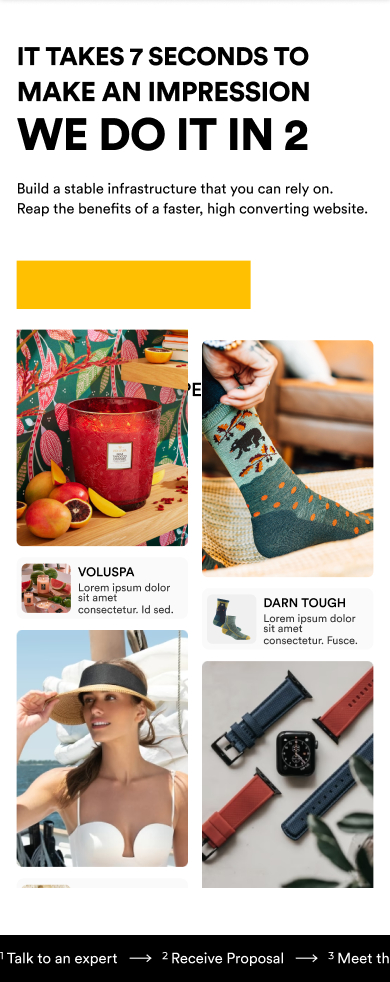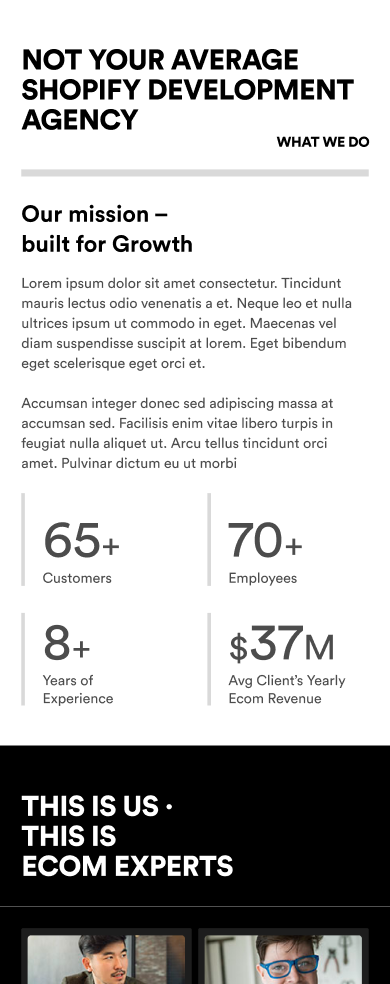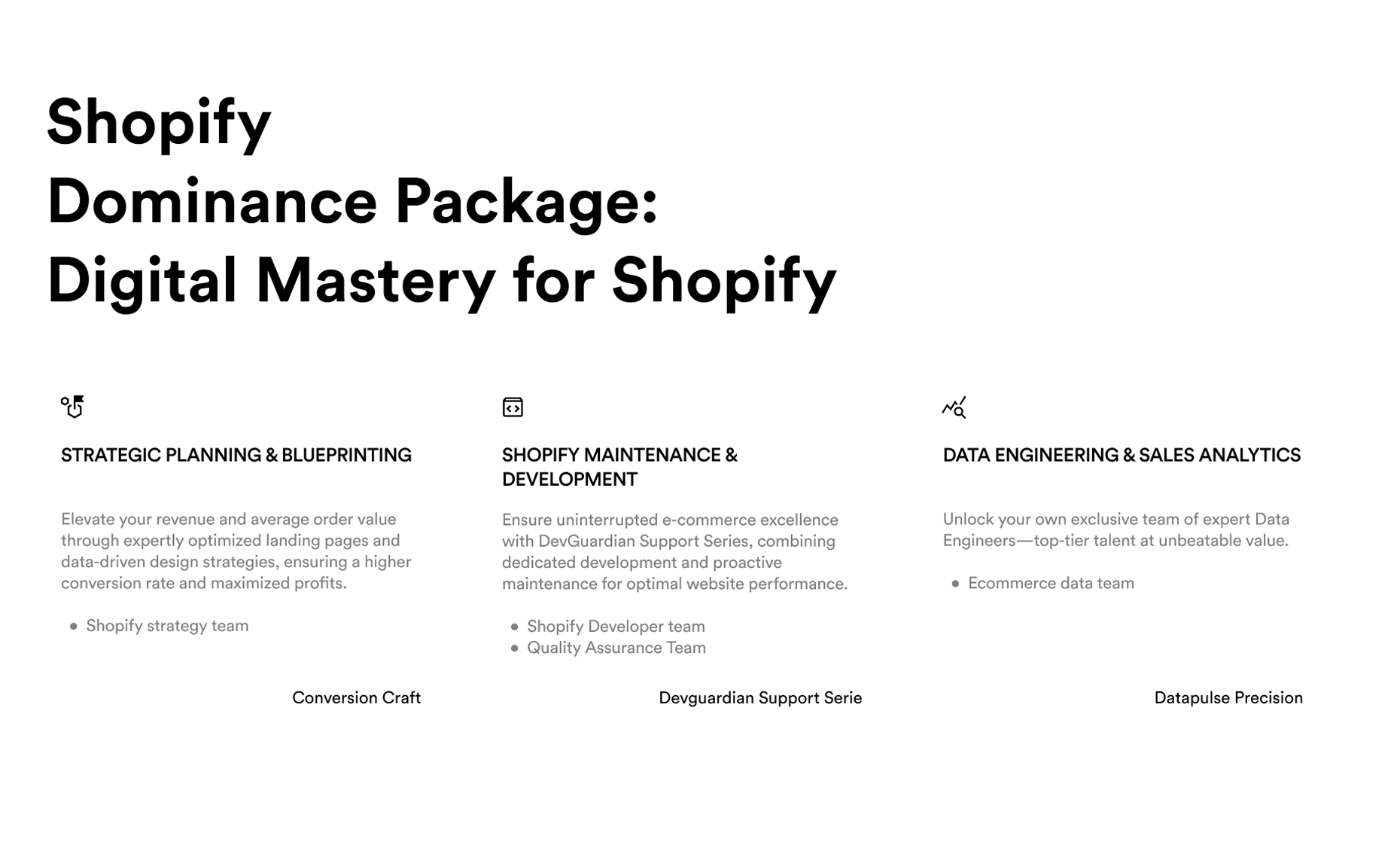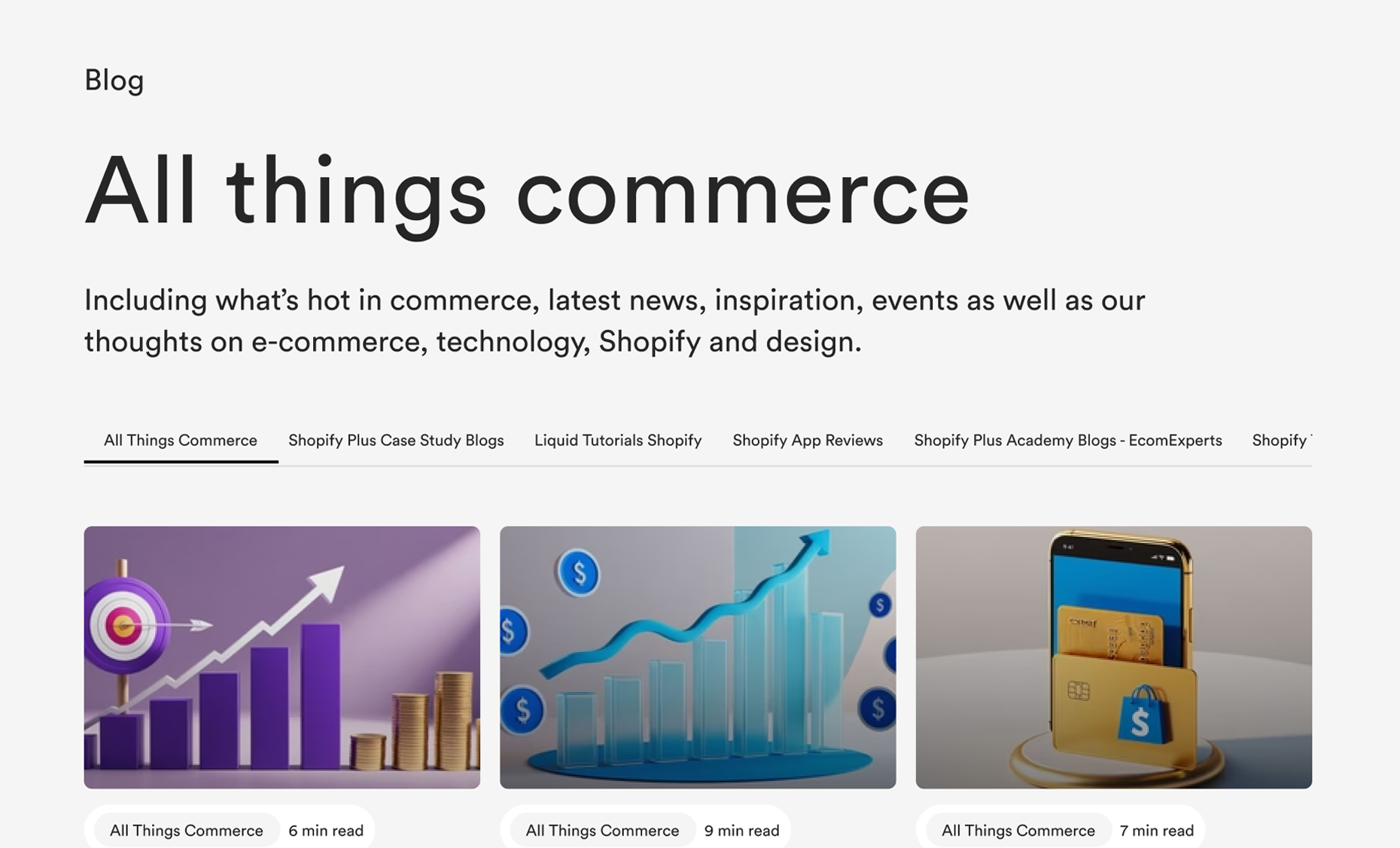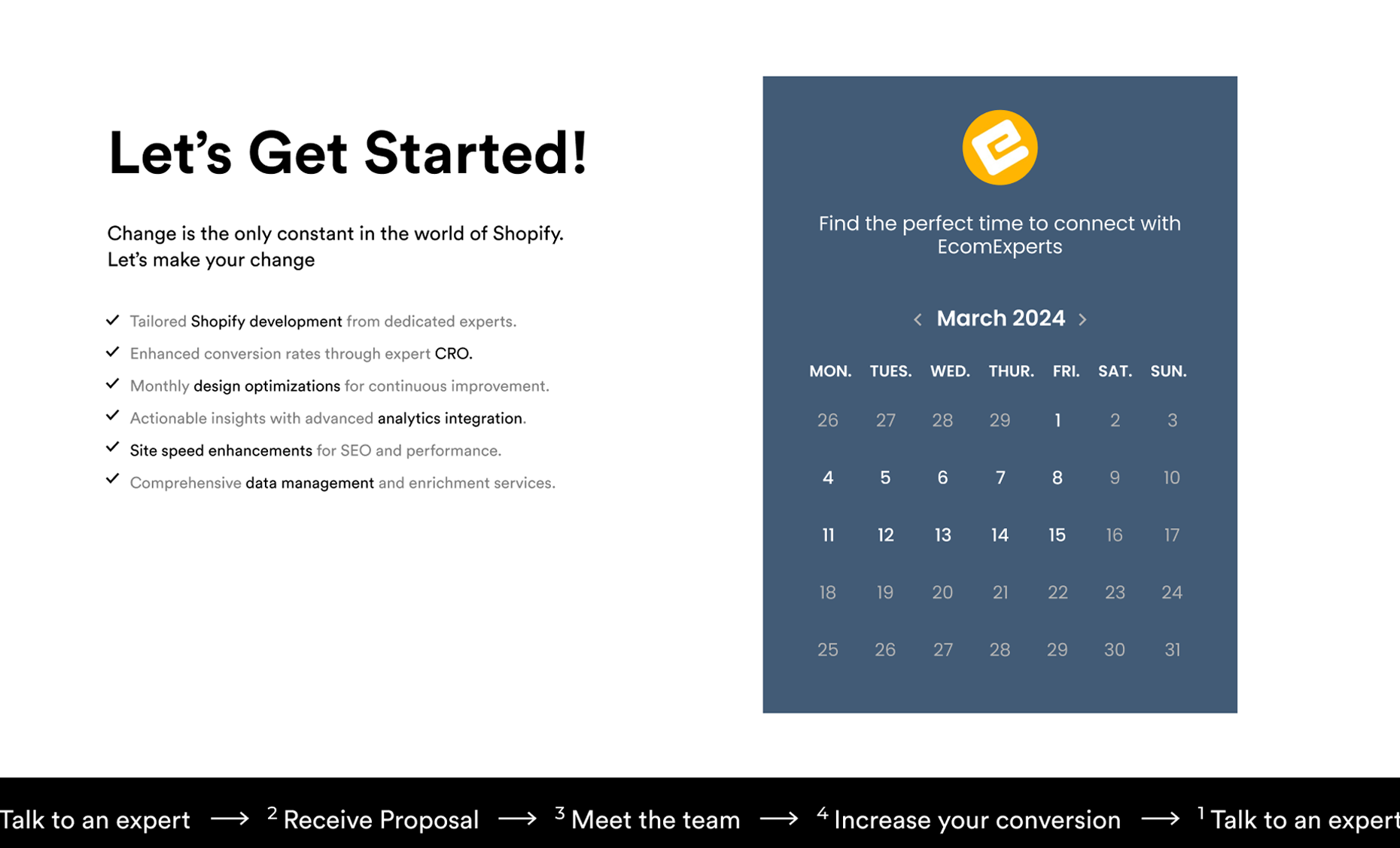In e-commerce, a sluggish website can be the difference between a sale and a lost customer.
For businesses aiming to hit the 7-figure mark, optimizing Shopify performance isn't just a nice-to-have—it's a necessity. By focusing on speed and user experience, you can ensure that your store not only attracts visitors but also converts them into loyal customers.
In this article, we will delve deeper into the various strategies and techniques that can be employed to enhance your Shopify store's performance, ensuring that it stands out in a crowded marketplace.
Understanding the Importance of Speed in E-commerce
Speed is a critical factor in the success of any online store. Research shows that even a one-second delay in page load time can lead to a significant drop in conversions.
For 7-figure businesses, this can translate into substantial revenue losses. In fact, studies have indicated that 40% of users abandon a website that takes more than three seconds to load.
This statistic underscores the urgency for e-commerce businesses to prioritize speed optimization as a core component of their overall strategy. Furthermore, the impact of speed extends beyond just immediate sales; it can also affect customer loyalty and brand perception.
A fast-loading site not only enhances the shopping experience but also builds trust with customers, making them more likely to return for future purchases.
Impact of Speed on User Experience
When users visit your Shopify store, they expect a seamless experience. Slow loading times can frustrate potential customers, leading them to abandon their shopping carts and seek alternatives.
Ensuring your site loads quickly enhances user satisfaction and encourages repeat visits. Additionally, a fast website can significantly reduce bounce rates, which is crucial for maintaining a healthy conversion funnel. A positive user experience fosters a sense of reliability and professionalism, which can be pivotal in establishing a strong brand identity.
Moreover, fast websites are favored by search engines, improving your SEO rankings and increasing organic traffic. This dual benefit of enhanced user experience and better visibility makes speed optimization a top priority.
As you work on improving your site's speed, consider the overall user journey, from the moment they land on your homepage to the final checkout process. Each step should be optimized to ensure that users feel engaged and valued throughout their shopping experience.
Tools to Measure Website Speed
Before you can improve your Shopify store's speed, you need to understand its current performance. Tools like Google PageSpeed Insights, GTmetrix, and Pingdom provide valuable insights into your site's loading times and offer suggestions for improvement.
These tools analyze various aspects of your website, such as server response time, image optimization, and script management, helping you identify bottlenecks that may be slowing down your site.
Additionally, consider using tools like WebPageTest, which allows you to test your site from different locations and browsers, giving you a comprehensive view of how your site performs under various conditions.
By regularly monitoring your site's speed with these tools, you can track improvements over time and make data-driven decisions to enhance performance further. It's also beneficial to set benchmarks for your site's speed and establish goals for improvement, ensuring that you remain focused on optimizing your store's performance.
Optimizing Shopify for Enhanced User Experience
User experience (UX) is a crucial component of a successful e-commerce strategy. A well-designed Shopify store not only looks appealing but also functions smoothly, guiding users effortlessly from product discovery to checkout.
A positive user experience can lead to higher customer satisfaction, increased sales, and improved brand loyalty. To achieve this, it's essential to consider every aspect of your store's design and functionality, from the layout and navigation to the overall aesthetic and usability.
By prioritizing user experience, you can create a shopping environment that encourages exploration and ultimately drives conversions.
Designing a User-Friendly Interface
Your Shopify store's design should be intuitive and easy to navigate. Use clear, concise menus and ensure that important information, such as product details and pricing, is easily accessible. A clutter-free design helps users focus on what's important—your products.
Additionally, consider implementing a responsive design that adapts to different devices. With a growing number of consumers shopping on mobile, ensuring your site is mobile-friendly is essential for capturing a wider audience.
A responsive design not only improves usability on smartphones and tablets but also positively impacts your SEO, as search engines prioritize mobile-friendly sites.
Furthermore, think about incorporating visual elements that enhance the user experience, such as high-quality images, engaging videos, and interactive features.
These elements can help showcase your products more effectively and create a more immersive shopping experience. Additionally, consider the use of whitespace in your design; it can help guide users' attention to key areas of your site and make the overall experience feel less overwhelming.
Streamlining the Checkout Process
The checkout process is a critical stage in the customer journey. A complicated or lengthy checkout can lead to cart abandonment. Simplify this process by minimizing the number of steps required to complete a purchase and offering multiple payment options.
Implementing features like guest checkout and auto-fill forms can further enhance the user experience, making it easier for customers to complete their transactions quickly and efficiently. Additionally, consider providing clear progress indicators during the checkout process, so users know how many steps are left until completion.
This transparency can help reduce anxiety and encourage users to follow through with their purchases. Moreover, offering a variety of payment methods, including digital wallets and buy-now-pay-later options, can cater to different customer preferences and increase conversion rates.
It's also essential to ensure that your checkout page is secure and trustworthy, as customers are more likely to complete their purchases when they feel confident in the safety of their personal information.
Technical Strategies for Speed Optimization
Beyond design and UX, technical optimizations play a significant role in improving your Shopify store's speed. By addressing backend issues, you can significantly reduce loading times and boost overall performance.
This includes optimizing your server settings, reducing the number of HTTP requests, and ensuring that your site is free of unnecessary code. Additionally, consider implementing caching strategies to store frequently accessed data, which can help speed up load times for returning visitors.
By focusing on these technical aspects, you can create a more efficient and responsive online store that meets the demands of your customers.
Image Optimization Techniques
Images are often the largest files on a webpage, and optimizing them can lead to significant speed improvements. Use tools to compress images without sacrificing quality, and implement lazy loading to ensure images load only when they enter the viewport.
This technique not only improves initial load times but also enhances the overall user experience by reducing the amount of data that needs to be loaded upfront. Additionally, consider using modern image formats like WebP, which offer better compression rates than traditional formats like JPEG and PNG.
By adopting these image optimization techniques, you can significantly reduce the load times of your Shopify store while maintaining high-quality visuals that showcase your products effectively.
Furthermore, regularly audit your images to ensure that they are optimized for performance, and replace any outdated or oversized files with more efficient alternatives. This ongoing maintenance can help keep your site running smoothly and efficiently.
Leveraging Content Delivery Networks (CDNs)
CDNs distribute your website's content across multiple servers worldwide, reducing the distance data must travel to reach users. This can drastically improve load times, especially for international customers.
By integrating a CDN with your Shopify store, you can ensure that your content is delivered quickly and efficiently, regardless of the user's location. Additionally, CDNs often provide additional features such as DDoS protection and improved security, which can further enhance your site's performance and reliability.
When selecting a CDN, consider factors such as pricing, ease of integration, and the geographic distribution of their servers to ensure that you choose a solution that best meets your needs.
Furthermore, regularly monitor your CDN's performance to ensure that it continues to deliver optimal results, and be prepared to make adjustments as necessary to maintain a high level of service.
Monitoring and Continuous Improvement
Optimization is not a one-time task but an ongoing process. Regularly monitoring your Shopify store's performance and making necessary adjustments is crucial for maintaining speed and user experience.
This proactive approach allows you to stay ahead of potential issues and continuously enhance your store's performance. By establishing a routine for performance checks, you can identify areas for improvement and implement changes before they negatively impact your customers' experience.
Additionally, consider setting up alerts for significant drops in performance, so you can address issues promptly and minimize disruptions to your business.
Using Analytics for Performance Insights
Analytics tools provide valuable data on user behavior, helping you identify areas for improvement. By analyzing metrics such as bounce rate, session duration, and conversion rate, you can gain insights into how users interact with your store.
Use this data to make informed decisions about design changes, content updates, and technical optimizations, ensuring your store continues to meet the needs of your customers. Furthermore, consider segmenting your analytics data to gain a deeper understanding of different customer demographics and behaviors.
This information can help you tailor your marketing strategies and improve your overall user experience. Additionally, regularly review your analytics reports to track the effectiveness of your optimization efforts and make adjustments as needed to ensure continued success.
Staying Updated with Shopify Features
Shopify regularly releases updates and new features designed to enhance store performance. Staying informed about these updates and implementing them as needed can help you maintain a competitive edge.
Join Shopify forums and communities to stay connected with other store owners and share insights and strategies for optimizing performance. Engaging with the Shopify community can provide valuable resources and support as you navigate the ever-evolving e-commerce landscape.
Additionally, consider attending Shopify webinars and workshops to learn about the latest trends and best practices in the industry. By staying informed and connected, you can ensure that your Shopify store remains at the forefront of e-commerce innovation.
Achieving 7-Figure Success with Shopify
Optimizing your Shopify store for speed and user experience is a critical step toward achieving 7-figure success. By focusing on both technical and design aspects, you can create a seamless shopping experience that attracts and retains customers. Remember, the journey to optimization is ongoing.
Continuously monitor your store's performance, stay updated with the latest trends, and be ready to adapt to the ever-changing e-commerce landscape. With dedication and the right strategies, your Shopify store can reach new heights of success.
As you implement these strategies, keep in mind that the ultimate goal is to create a shopping experience that not only meets but exceeds customer expectations. By prioritizing speed and user experience, you can build a loyal customer base that drives your business toward long-term growth and profitability.
In conclusion, the path to optimizing your Shopify store is multifaceted, requiring a combination of technical expertise, design sensibility, and a deep understanding of your customers' needs.
By investing time and resources into these areas, you can create a powerful online presence that not only attracts visitors but also converts them into lifelong customers.



